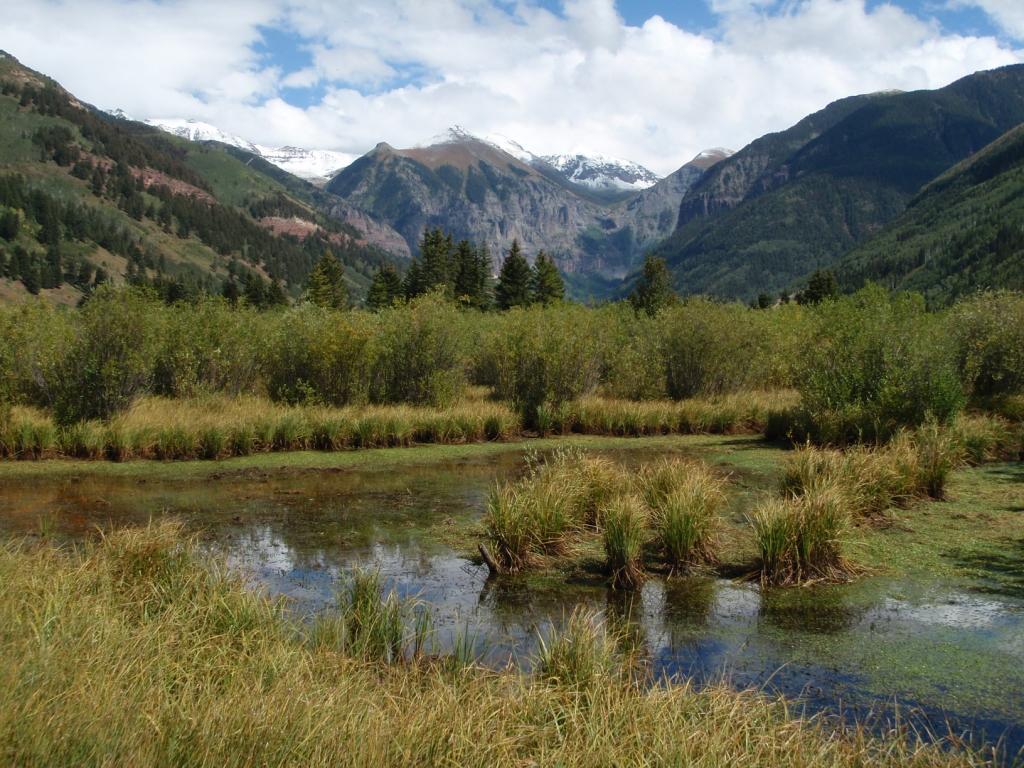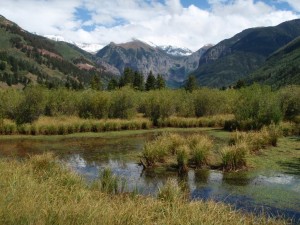
07 Oct River Watch: Why Rivers? Intro to New Blog
Editor’s Note: We met Erica Stock at an awareness and fundraiser for American Rivers, her employer, and the leading organization working to protect and restore the nation’s rivers and streams. (We are proud supporters.) Erica’s driving professional passion is to build the organizational capacity of public and nonprofit organizations that seek to tackle the challenges facing coldwater fisheries and western rivers. She also advises philanthropists seeking to invest and support such initiatives. In her free time, Erica travels to remote corners of the earth to fly fish (among other challenging activities). Telluride Inside… and Out welcomes Erica Stock into our family of writers, especially our contributors on the environment and sustainability. Look for her twice-monthly posts.
Healthy free-flowing rivers serve as the lifeblood of western economies and our western way of life. Emerging from lush headwater valleys, flowing through desolate high plains meadows, and cutting through deep desert canyons, they grow the food that feeds our friends and our families and quench the thirst of growing cities and suburbs along the way.
Their deep pools, white riffles, and willow thickets support a diverse and abundant network of fish and wildlife – trout, elk, moose and mule deer – that reliably draw thousands of hunters and anglers to small communities after the last cut of hay is dried, stacked, and stored.
And for all of us – whether rancher, urban city dweller, or playful child – the soothing sound of flowing water provides a symphonic escape that frees our minds and feeds our souls.
In August, during a visit with supporters of the river conservation organization American Rivers, I was privileged to meet some of Telluride’s most dedicated local river stewards who helped lead efforts to restore and permanently protect the Valley Floor. As one of Telluride’s most prized and celebrated swaths of community-owned land, the Valley Floor is a dynamic 560 acre headwaters ecosystem that serves as a gateway, welcoming visitors to this unique, counter-cultural town.
While hiking along the San Miguel River from below the superfund site at Town Park to its steep decent below Highway 145, I learned about the Valley Floor project, it’s history and milestones, directly from its shapers. It became clear this project represented a “watershed moment” (forgive the pun) for the Telluride community, who actively chose and fought for preservation and sustainability when tempted by the vision of a new, upscale bricks-and-mortar resort.
It’s a challenge not unlike those experienced by western towns like Steamboat or Jackson – all situated among aspen groves, picturesque mountain peaks, and of course wild, winding rivers. Pressured by the economic boom brought about by the commercialization of the ski industry and accompanying influx of seasonal residents, many small mountain towns have a difficult choice: transform and accommodate those who migrated en masse, or hold their ground and burst at the seams. Telluride chose the later to protect an important resource – the San Miguel watershed – and accommodate growth in a more sustainable way, directing development towards across the ridge.
The Valley Floor is now worn as a badge of honor, reminding visitors that the people of Telluride are among a rare breed of mountain-dwellers who value wide-open spaces, wildlife, healthy habitat, and rivers over the potential economic benefits associated with short-sighted development. That the community chose to protect the Valley Floor and relocate most of the development speaks volumes about the political power and passion of its people.
As a conservationist, avid outdoorswoman, and grassroots advocate, through this blog I hope to highlight stories like these that expose threats and challenges to our rivers and water resources, show the strength of communities that hold true to their western values, and inspire regional support to protect and preserve the landscapes that define us all.



Sorry, the comment form is closed at this time.